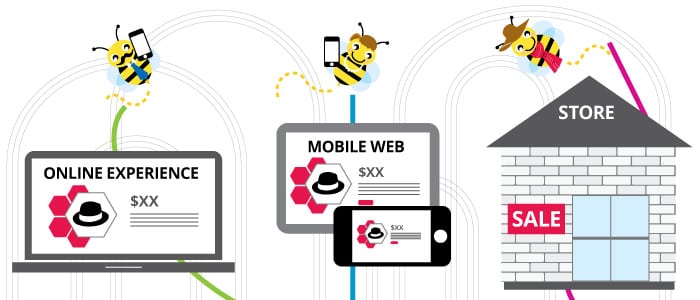I’ve been discussing the topic of customer experience (CX) with quite a few companies, and have been repeatedly drawn into the omnichannel vs. multichannel debate.
The first aspect people often mention is their scope. From a semantic standpoint, “multi” means “many” and “omni” means “all.” People often mention “order online and pick and return in stores are clearly omnichannel and not multichannel.” I don’t believe the debate should be focused on how many, and which channels, are involved to understand the core difference. I see “omnichannel” as describing a key change and shift in perspective: the customer centricity which drives most digital transformations I have witnessed.
Multichannel was often based on the assumption that customers were choosing a main way to engage, whether physical stores or online. In many companies, each channel was managed in isolation with dedicated teams, budgets, processes, tools, reporting structures and revenue goals.
But most customers now navigate between many digital touchpoints for a single purchase. They are increasingly dictating how and where they want to be engaged and serviced. From the customer perspective, a typical journey might be “search on my smartphone while commuting, add items to my basket, investigate findings on my laptop when home in the evening, visit stores to review items and search for coupons and compare prices on the mobile while in the store.”
 Omnichannel is no longer about maximizing channel efficiency. It puts the customer, not corporate silos, at the core of the strategy. The omnichannel goal is to deliver consistent and seamless experiences for the customer to better engage and convert him or her. The delivered digital experience expectations are high, whatever the chosen channel is as customer progress through their journey at their moment and place of need. For instance, an agent/clerk in a physical store should have key information on all past interactions at his fingertips when interacting with the customer.
Omnichannel is no longer about maximizing channel efficiency. It puts the customer, not corporate silos, at the core of the strategy. The omnichannel goal is to deliver consistent and seamless experiences for the customer to better engage and convert him or her. The delivered digital experience expectations are high, whatever the chosen channel is as customer progress through their journey at their moment and place of need. For instance, an agent/clerk in a physical store should have key information on all past interactions at his fingertips when interacting with the customer.
Achieving this requires more than tools. Omnichannel often stems into digital transformation projects, with a gradual approach building from existing systems and interconnecting them. The key ingredient is often analytics.
Typical questions that lead into “multi vs. omni” discussions are:
- Can we capture and stitch together all the user actions as they navigate multiple channels?
- Do you capture the delivered experiences to help discover customer struggles and explain low engagement and order size, abandonments or bad app reviews?
- Can I get a real-time view of my business, including revenues, transaction, and engagement level as my customer interact?
- Can you deliver a quantified view by incident as number of impacted customers and revenues to help prioritize efforts?
- Can your analytics tell me what went wrong and why so which team to engage?
Omnichannel strategies are different from multichannel. And, supported by an effective digital performance platform, can answer all of these questions in the affirmative. Yet, beyond deploying technical solutions, the biggest challenge is often implementing the organizational and cultural changes necessary.
Teams should no longer operate in silos; they need to collaborate and communicate to act not as a multi-faced business, but as a unified organization where all (omni) work together to give customers whatever they are looking for at any point along their digital shopping journeys.
Note: this post originally appeared in 2017 and has been updated
Erwan Paccard is Director of Product Marketing at App Dynamics
The post Omnichannel vs. Multichannel: Are They So Different? appeared first on Multichannel Merchant.



0 Commentaires